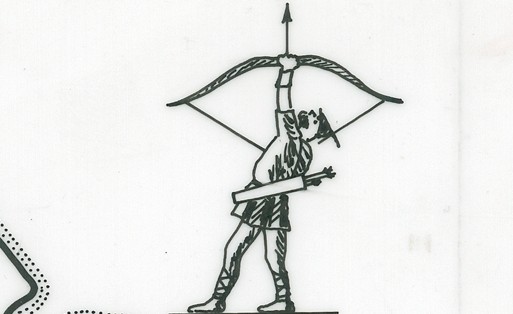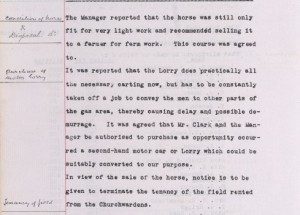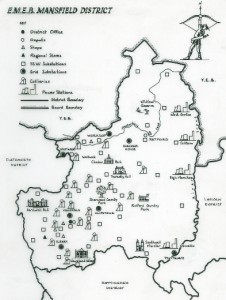
November 27, 2013, by Kathryn Steenson
An electrifying history of the East Midlands
As energy companies have announced another rise in prices, taking effect this month, we take a look at some of the early electricity company records in Manuscripts & Special Collections.
Much like their modern counterparts, residents of Nottingham in 1901 could travel around the city on an electric tram service and walk streets illuminated with electric street lighting. Electricity was still something of a novelty rather than a necessity though, as it was only twenty years since the first central electricity station started providing power for streetlights and a small number of properties in Godalming, Surrey.
Today, the supply is overseen by large, multinational corporations, but in 1915, there were over 600 separate electricity supply undertakings, run by individual people, companies or local authorities. Most were too small to be financially successful. This was a contributing factor to the passing of the Electricity Act 1947, which nationalised the industry on 1st April 1948.
The extract below is taken from the minutes of the Oakham Gas and Electricity Company Limited from 1927 and perfectly illustrates the meeting of the old and modern worlds:
“The Manager reported that the horse was still only fit for very light work and recommended selling it to a farmer for farm work. This course was agreed to.
It was reported that the Lorry does practically all the necessary carting now, but has to be constantly taken off a job to convey the men…It was agreed that Mr. Clarke and the Manager be authorised to purchase as opportunity occurred a second-hand motor car or Lorry which could be suitably converted to our purpose.
In view of the sale of the horse, notice is given to terminate the tenancy of the field rented from the Churchwardens.” (Ref: BEO)
That a company relied on a horse and one second-hand vehicle for transport is indicative of just how small and provincial some of the electricity suppliers were. This was one of the many companies absorbed into the East Midlands Electricity Board (EMEB) several years later.
This plan of the Mansfield district is one of the few records we hold from the EMEB, which was one of a dozen electricity boards that began operating following nationalisation. Its head office was in Arnold, Nottingham. A great deal of effort has gone into hand-drawing the individual buildings and the Robin Hood compass, shooting his arrow North. What is also notable is how many working collieries there are, which would have fuelled the power stations in the area. (Ref: BEE 4/5)
The economic instability of the earliest electricity companies, followed by the industry’s nationalisation in 1948 and privatisation from 1990 means that the surviving records are incomplete and scattered.
Manuscripts and Special Collections holds incomplete records of twelve pre-nationalisation power companies that were absorbed into the EMEB. To find out how to view them, or to find more information about the other records we hold, visit the Manuscripts and Special Collections website.
No comments yet, fill out a comment to be the first



Leave a Reply